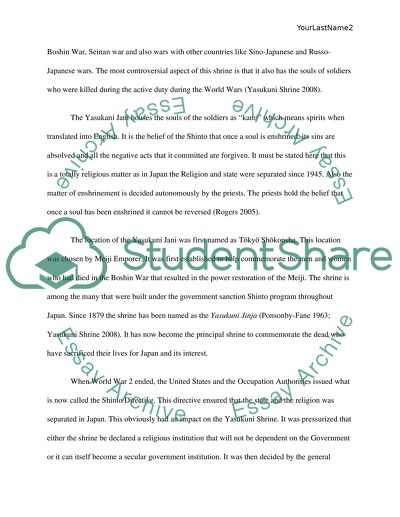Cite this document
(“Yasukuni Shrine Research Paper Example | Topics and Well Written Essays - 1500 words”, n.d.)
Yasukuni Shrine Research Paper Example | Topics and Well Written Essays - 1500 words. Retrieved from https://studentshare.org/history/1453721-yasukuni-shrine
Yasukuni Shrine Research Paper Example | Topics and Well Written Essays - 1500 words. Retrieved from https://studentshare.org/history/1453721-yasukuni-shrine
(Yasukuni Shrine Research Paper Example | Topics and Well Written Essays - 1500 Words)
Yasukuni Shrine Research Paper Example | Topics and Well Written Essays - 1500 Words. https://studentshare.org/history/1453721-yasukuni-shrine.
Yasukuni Shrine Research Paper Example | Topics and Well Written Essays - 1500 Words. https://studentshare.org/history/1453721-yasukuni-shrine.
“Yasukuni Shrine Research Paper Example | Topics and Well Written Essays - 1500 Words”, n.d. https://studentshare.org/history/1453721-yasukuni-shrine.


